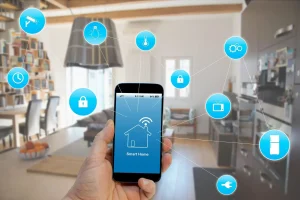Buying EV Chargers for Home

What is Electric Vehicle Charging?
Electric Vehicle Charging for the Home
Charging your electric car at home is easy if you have a home electric car charger. An electric car charger can charge your electric car at home. There are different types of EV chargers and the charging speed depends on the type you choose. Most electric car chargers include a charging unit with connectors and cables that connect to the car’s battery. They also require different types of installation, and you may need to hire a qualified electrician to install an electric car charger in your garage or yard.
Three electric car charging levels
Level 1 – A Level 1 charger puts out 120 volts AC. It plugs into any standard electrical outlet and is a good option for those who don’t mind slow charging or don’t plan on driving very far each day.A Level 1 EV charger will give you about 3 to 8 miles of use per hour of charging.
Level 2- Level 2 chargers use 240 volts AC and require their own dedicated circuit breaker on your electric panel. This type of charger is much faster than a Level 1 and will allow you to use about 16 to 96 kilometers per hour of charge.
A Level 3 charger is a DC charger, so it’s faster than both Level 1 and Level 2. This is the type of EV charger you’ll often see at service stations, although some public chargers may also be Level 2. A Level 3 charger will give you up to 80% charge in about half an hour.
Which EV charging level is best for you?
Having an EV charger at home is very convenient for charging your car when you need it.Level 3 EV chargers are usually used at service stations or charging stations, so this comparison will focus on Level 1 and Level 2. To choose between these two levels, you’ll need to evaluate your driving habits and decide how fast you want to charge your car.

Level 1 vs Level 2 Electric Car Charging
Tesla Electric Car Charger
The Level 1 home electric car charger is the cheapest electric car charging station. Installation is easy because it plugs into a standard electrical outlet in your home and you can start using it as soon as you install it. A Level 1 charger is a great option if you like to charge overnight or only drive a short distance each day.The only downside to a Level 1 charger is that it charges slowly. If your battery dies and you need to recharge it, it will take you a few hours to reach a range of 25 kilometers.
Level 2 home EV chargers charge much faster than Level 1 chargers. Depending on the type you choose, you can be fully charged in a couple hours. This is the perfect type if you drive a lot or if you regularly drain your battery.Level 2 home chargers are slightly more expensive and you have to hire a qualified electrician to install them. It also requires a dedicated circuit breaker in your electrical panel, a qualified electrician can take care of this for you as well.
Electric Vehicle Cables and Connectors
Most Level 1 and Level 2 home electric vehicle chargers can use the SAE J1772 connector. This is a universal connector, also known as a J-plug, that can plug into and charge almost any type of electric vehicle. The only vehicle that cannot use the J1772 connector is a Tesla. However, Tesla provides the adapters needed for their vehicles to use the same J1772 charging port. If you have more than one electric vehicle and you want to use both the Tesla connector and the J1772 connector, you can choose a charger that contains multiple cables and connectors. A qualified electrician can also take care of setting up multiple cables and connectors.
Level 3 EV chargers use different types of connectors, including CCS, CHAdeMO, and Tesla Supercharger.It also uses a high-power DC charging cable to provide the fastest charging time. Not every electric car is compatible with fast charging cables and connectors, so you’ll need to check your car’s specifications before using a Level 3 EV charging station.
Tesla chargers
Factors affecting EV charger compatibility
Cables and connectors are important, but to choose the best charger for your home, you need to consider a few other factors as well.
Maximum Charge Rate – You need to choose a charger that is compatible with your vehicle’s maximum charge rate. For example, if your maximum charging rate is fast, you’ll want a high-powered charging station that can provide the speed and power it needs. If it’s slow, you may want to choose a Level 1 EV charger instead of a Level 2.
Software Compatibility – Software is how your EV communicates with your EV charger. If your EV software is not compatible with the charger, it may not connect or charge.
Cable Length – It’s important that your car can be parked close enough to the EV charger to be easily plugged in.The length of the EV cable depends on the charger you choose. You will find that most Level 1 and Level 2 EV chargers have cable lengths of about 18 to 25 feet (5.5 to 7.5 meters).







